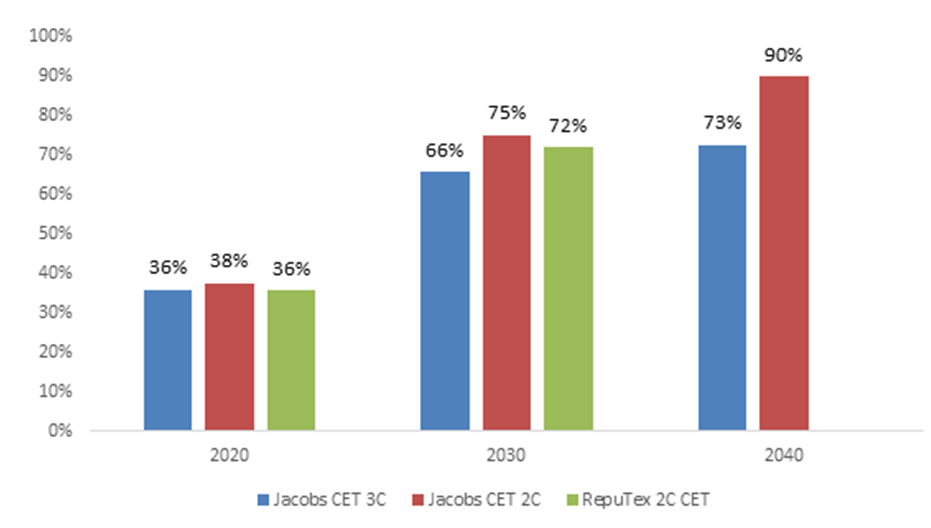Modelling finds Australia’s Paris commitment requires 66-75% renewable energy by 2030
The first major report from The Australia Institute’s Climate & Energy Program evaluates the energy policies required to meet Australia’s greenhouse gas emissions reduction targets set by the Abbott government and pledged at the international climate summit in Paris.
The Climate & Energy Program was launched following the transfer of the Climate Institute’s intellectual property to The Australia Institute.
The analysis of the government-commissioned modelling finds that, to meet its Paris commitment, Australia faces a choice:
- adopt a least-cost path, involving a transition to between 66-75% renewable energy by 2030; or
- further delay the transformation of the electricity sector, which will increase the cost to the economy as a whole and push a greater proportion of the emission reduction task onto other sectors, such as agriculture, transport and manufacturing.
The report, by Director of Research at The Australia Institute, Rod Campbell, shows the most efficient path to meeting Australia’s international commitment would see the electricity sector reducing emissions by between 40%-55% below 2005 levels in 2030.
“This analysis of the economic modelling demonstrates meeting these targets for the electricity sector with a policy like the clean energy target is likely to require 66-75% of electricity to be supplied by renewables,” Executive Director of The Australia Institute, Ben Oquist said.
“If Australia adopts a weak clean energy target which does not provide a strong signal for renewables, we risk turning Australia’s moderate Paris targets into an extremely expensive task.
“While there are emissions reductions that can be made in all sectors of the economy, electricity generation is an area where the technology to make major emissions cuts is cheaper, and is here now.
“The Government has been consistent in its commitments to Australia’s international emissions targets. It remains to be seen if we choose to meet those Paris commitments the easy way, or the hard way.
“Unless energy and climate policy are integrated we will have neither reliability nor affordability, let alone the ability to meet our international commitments,” Oquist said.
Renewable energy penetration required to achieve emissions reductions 40%-55% CET

Sources: Jacobs (2017) Report to the independent review into the Future Security of the National Energy Market: Emission mitigation policies and security of electricity supply and Reputex (2017) It’s the economics, stupid
Related research
General Enquiries
Emily Bird Office Manager
Media Enquiries
David Barnott-Clement Media Advisor